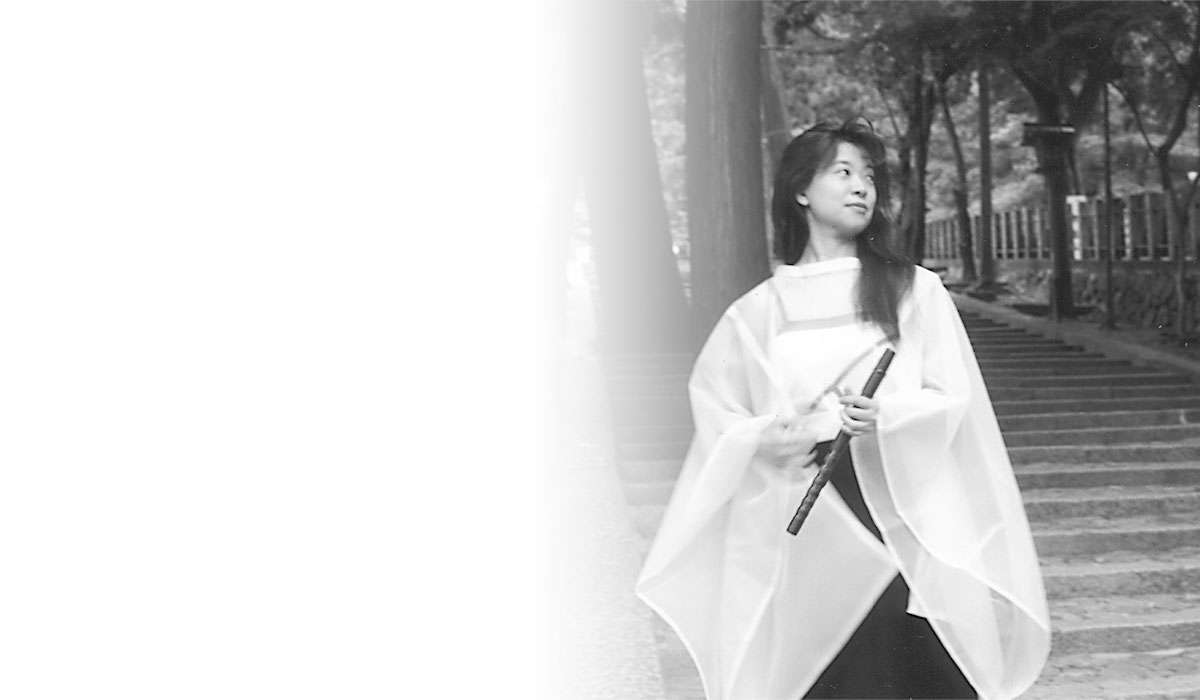Profile
NONAKA, Kumiko (Noh-flute player)
Born in Kyoto, Japan.
1986, graduated from International Christian University, Tokyo with BA (Liberal Arts).
Learned piano and violin for enjoyment since childhood, and grew interest in Japanese traditional music. Started studying noh-flute (a bamboo flute in Noh theatre) with Hiroyuki Matsuda (a member of Nihon Nohgaku-kai).
Started public performance in 1994, played traditional Noh music pieces arranged for noh-flute solo, and experienced collaborations with various performers (players of western, eastern and folklore musical instruments, dancers of traditional and contemporary dances). Invited to many memorial events at shrines and temples.
Since 1998, have started an annual concert at Daitokuji temple (one of the most famous zen-temples) in Kyoto and have performed creative stages with guest performers.
Flutes have been believed by Japanese to bring the special power in order to make contact with invisible existence. Noh-flute is sometimes called “Kami-oroshi no fue” (meaning a flute which calls gods down to the visible human world). It can be said that noh-flute in Noh performance plays the role of building a bridge between the world of gods and spirits, and invites them to the human world for even a brief period. Noh-flute is also played to let invisible beings come back to their own world.
Nonaka plays noh-flute with the awareness of such unconscious Japanese value, which is being handed over since ancient times, and she believes that noh-flute conveys resonance to the audience, not only in the physical, but also in the spiritual aspects.
She finds rich possibilities to express various things with noh-flute, and hopes to create her own music from now on.
Note
Noh
A stage performance (one of the world cultural heritage) with a history of more than 600 years, which is combined with dances, songs, and instrumental music. Noh is sometimes explained as an opera in Japan. Most of the repertoires use masks. The stories come from legends, folk tales, historical events, and Buddhism narratives, from China, India and Japan. Four instruments (a shoulder drum played with the hand, a waist drum played with the hand, a drum on the floor beaten with two sticks, and noh-flute) accompany the story.
Nihon Nohgaku-kai
Nihon Nohgaku-kai is designated to a national treasure as a group, whose members are consisted of nominated Noh performers from the Nohgaku Performers’s Association (www.nohgaku.or.jp).







